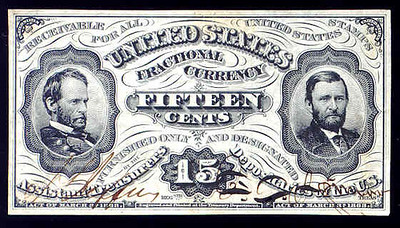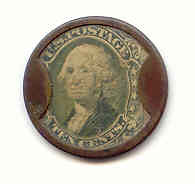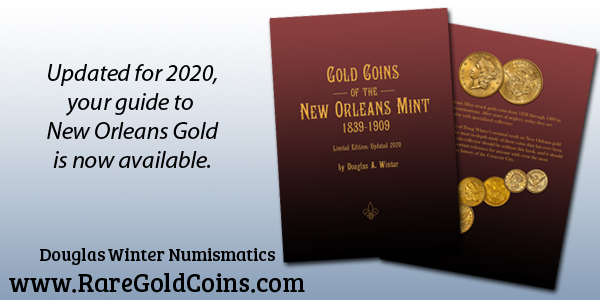
PREV ARTICLE
NEXT ARTICLE
FULL ISSUE
PREV FULL ISSUE
V25 2022 INDEX E-SYLUM ARCHIVE U. S. POSTAGE AND FRACTIONAL CURRENCY WEBSITEJohn and Nancy Wilson write: "While researching counterfeit U. S. Postage and Fractional Currency we came across this site. We found it very informative for both the regular and counterfeit currency." Thanks! Here are a couple excerpts. Links below - see the site online for more. -Editor Why Fractional Notes? Imagine yourself a proprietor of a business in the early 1860's and a customer wants to pay for their purchases. What do you do when you don't have adequate change available? There is a shortage of coins at the bank due to the Civil War. People are hoarding the few coins that they have and others were sending them to Canada to sell for their scrap value which had risen to more than the coins were worth. These are the major reasons why you can't give proper change to your valued customers. What do you do? Do you print your own currency that is only good at your establishment? Do you accept script from another business that may not be good? This was a real problem back in the early 1860's. People and businesses did not have adequate supply of coins to keep the economy running smoothly so they reverted to creating their own form of private currency. In 1862, the federal government stepped in by issuing postage currency and later fractional currency that was widely accepted by the populace. Encased Stamps
A stamp with its corners folded was placed within the brass frame and a thin sheet of mica was placed over the stamp. The tabs of the brass container were then folded to keep everything in place. John Gault hoped that advertising placed on the reverse would generate his profits. He sold the copper frames to the merchants for a 1-2 cent profit. Merchants warmed to his idea of putting their advertising on the reverse and 31 different vendors decided to advertise on these colorful tokens. The denomination of the stamps used were the 1, 3, 5, 10, 12, 24, 30 and 90 cents. His patent was issued on August 2, 1862. It was the same time that the use of postage stamps that were used as money was banned in January 1863 by the Federal Government. The idea of encased postage did not last much longer. With the advent of postage currency and fractional notes, the encased postage stamps no longer filled a need. They lasted for several years and most show extensive wear with dents and broken mica. First issue The first issue notes, better know as Postage Currency, was authorized in the summer of 1862 and signed into law by the President on July 17, 1862. It was called Postage Currency since these notes resembled stamps. They were issued in 5, 10, 25 and 50 cent denominations. All four denominations came in the following order: straight edge with no monogram, perforated with no monogram, perforated with the ABNCO monogram (American Bank Note Company), and straight edge with monogram. A problem occured with the perforated sheets. The notes came apart and were sometimes damaged during shipping. Because of this, the straight edge notes became the favorite and the production of the perforated notes was short lived. This accounts for the rarity of the perforated notes. First Issue CFT's
There has been only one variety for the 5C first issue counterfeit identified. It is extremely rare type with only three known examples. The 10C note has at least five different varieties. Look at the crude engraving of Washington. For the 25C notes, there are at least nine different types of counterfeits. With the note shown, you can see the result of using wax paper to mute the facial engravings. The most copied note was the fifty cent denomination with at least twenty different counterfeit varieties. The counterfeiters were going to make more by counterfeiting the higher value note.
To read the complete website, see:
Wayne Homren, Editor The Numismatic Bibliomania Society is a non-profit organization promoting numismatic literature. See our web site at coinbooks.org. To submit items for publication in The E-Sylum, write to the Editor at this address: whomren@gmail.com To subscribe go to: https://my.binhost.com/lists/listinfo/esylum All Rights Reserved. NBS Home Page Contact the NBS webmaster 
|



